
 Victor Nuño
The Hockey Writers
Victor Nuño
The Hockey Writers
56
Reads
0
Comments
Sharks Need More Defense for Burns & Karlsson
The San Jose Sharks have two of the best defensemen in the league, or at least two defensemen who used to be elite in Erik Karlsson and Brent Burns. The 35-year-old Burns is under contract for another five years at $8 million per year and the 30-year-old Karlsson for another seven years at $11.5 million per.
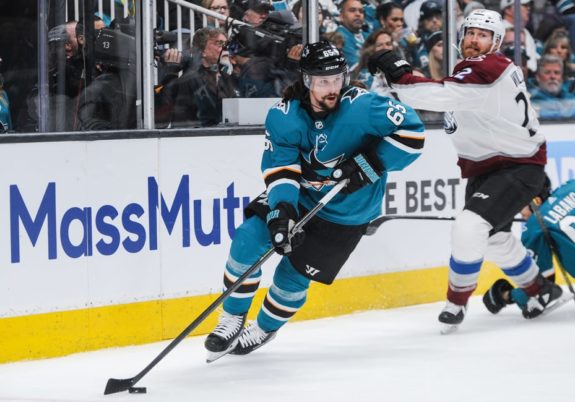
With neither of them going anywhere anytime soon and both having a performance dip in 2019-20, the question is how do the Sharks get the most out of each of them moving forward?
The Power Play
During his inaugural season, Karlsson was joined by Burns for 57% of his power play shifts and the lone defender for 34% of his shifts per Dobberhockey.com. This shifted to 51% with Burns and 46% solo in 2019-22. It seems like the preference is to have Karlsson be the power play quarterback, but still have Burns involved to a lesser extent.
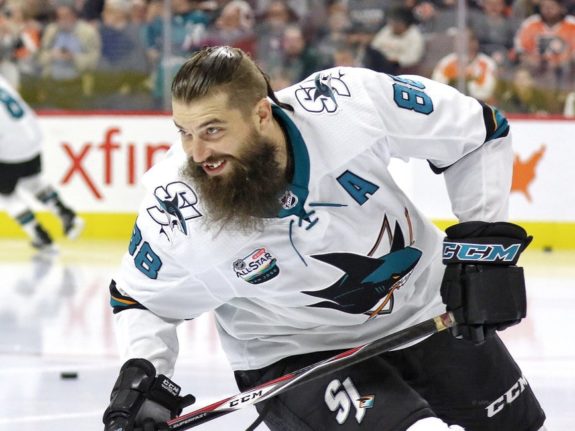
In 2019-20, Burns was moved to the left point on the power play, a spot he had rarely occupied previously. His shot maps from 2019-20 and 2018-19 demonstrate this stark contrast.
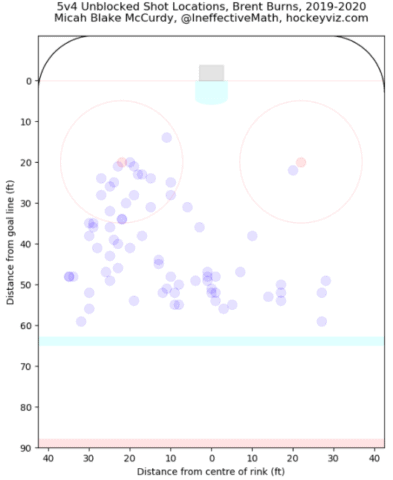
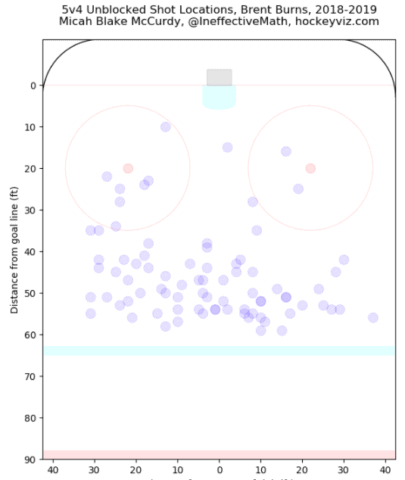
In addition to the different position, the Sharks asked Burns to change what made him successful in the past. Previously, he excelled at getting a shot off quickly and the forward would either tip the shot (mainly Pavelski) or crash the net for rebounds. From the left point, they asked him to use a one-timer, which is not his strongest asset.
Related: Revisiting the Brent Burns Trade
My suggestion would be to put Burns back on the right point to do what he does best and get those shots to the net quickly. Karlsson can run the power play from the middle or left side and Burns can even slide down to the half wall if they run a 1-3-1. Burns could also play more like a forward on the power play, something the Sharks didn’t experiment with thoroughly.
Who is Better at Generating Offense?
Both at even strength and on the power play, Burns outpaces Karlsson in individual expected goals per 60 minutes (ixG/60) by a significant margin from Evolving Hockey. In addition, the last two seasons for Burns were about equal at 1.20 and 1.23 ixG/60, but Karlsson saw his .97 ixG/60 in 2018-19 halved in 2019-20 to .46.
It is unclear to me how much Karlsson’s foot and groin injuries still trouble him, but his stride and defensive positioning do not seem as effortless as they once did in Ottawa. After being shut down by the Sharks on Feb. 15 2020, Karlsson should have 9-10 months of rest before playing meaningful hockey again, if the 2020-21 season starts in December 2020 or January 2021 as currently planned. That amount of rest should allow him to fully heal and we should know exactly what he is still capable of. The Sharks surely hope he can live up to the massive contract they gave him.
Defensive Liabilities
Expected goals (xG) are a great metric to track how a good a player is at both ends of the ice. By plotting expected goals for per 60 minutes (xGF/60) versus expected goals against per 60 (xGA/60), you get a really good idea of a player’s value to the team at both ends of the ice. You also get an idea of if an offensive player is a liability to be scored on while on the ice. Neither Burns or Karlsson are particularly good defensively.
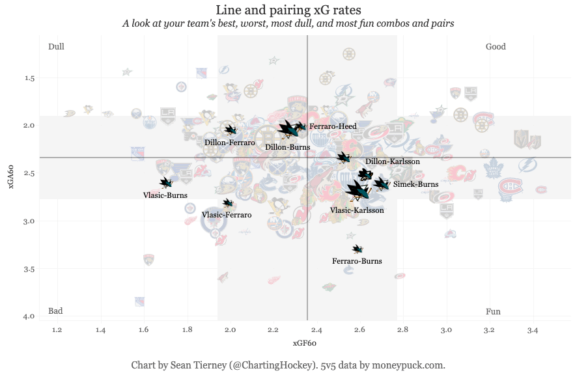
Any pairing below the middle horizontal line is a defensive liability. Brenden Dillon, who is no longer with the team, lifts Burns to respectability and Karlsson to almost average, but with any other partner, both Karlsson and Burns are a greater threat to be scored on than generate a goal.
The Paul Martin Effect
One of the best things the Sharks can do is pair Burns and Karlsson each with a strong defensive defenseman. Burns won the Norris Trophy after the 2016-17 season in no small part because he was paired with elite, stay-at-home defenseman Paul Martin. During that season, Burns was able to unleash his offensive potential and Martin cleaned up his defensive blemishes nearly all the time. Burns’ offensive threat generation was the highest in his career in 2016-17, even higher than the seasons he played right wing.

The top is the offensive threat level, where positive numbers represent increased threat level. The Sharks need to find the next Martin to allow Burns to flourish once again.
What About Pickles?
The Sharks thought they had another elite stay-at-home defender in Marc-Edouard Vlasic, and they did, but he no longer fits that description. He may be the biggest reason the Sharks’ goaltending has struggled in recent years, but he may also be the reason their offensive defensemen are not excelling as they previously did.
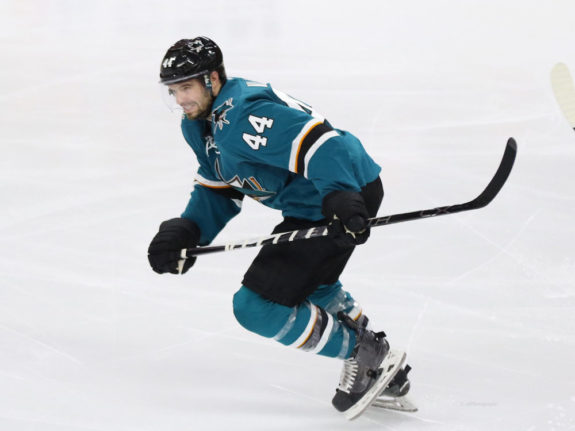
Throughout his career, Vlasic has been a steady, shutdown defenseman who is excellent at limiting zone entries and getting the puck out of the zone. That was true for much of his career, but it is no longer. After routinely limiting opposing teams’ chances and posting better than league average shot attempts against, he began to severely decline in 2018-19 — Karlsson’s first season with the Sharks.

The bottom row of images is where negative numbers are good, indicating below average shot attempts for the opposing team in his defensive zone. The decline is most visible in the second from the bottom right image as the shot attempts for jump up.
Transition data from Vlasic shows and even more grim picture:
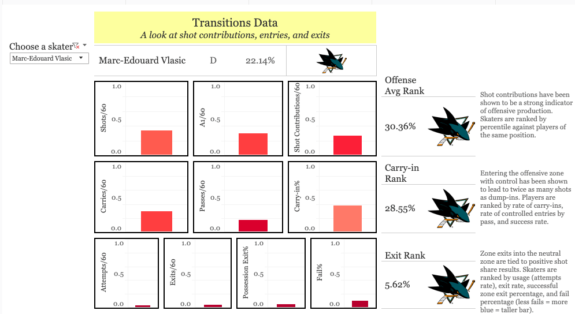
Vlasic was downright bad at getting the puck out of his own zone and entering the offensive zone. If your best defensive defenseman is all of a sudden bad defensively, your offensive defensemen are going to be asked to excel at something they have never been good at — playing defense in their own zone. Vlasic was supposed to be a part of the three-headed monster of Sharks’ defensemen, but that has not worked out as planned.
What Other Options Do the Sharks Have?
So who is good on the Sharks at driving the puck out of his zone and generating offense? Try and guess. I am betting most who don’t watch the Sharks won’t even know the player’s name. Even Sharks fans probably won’t guess— Radim Simek.
Related: Fuzzy HIstory of the NHL Playoff Beard
Simek helped Burns excel, or be as close to good as he could. He even helped Mario Ferraro achieve success. Vlasic, on the other hand, drove down both Burns and Ferraro, while Karlsson dragged Vlasic almost to the good range.
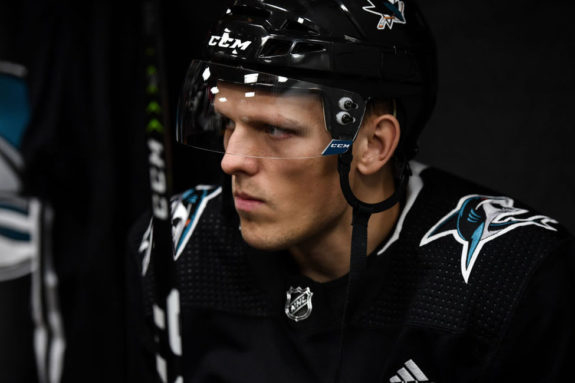
Who is Simek? He was signed by the Sharks after the 2016-17 season as a 25-year-old, unsigned defenseman who played well in the Czech league. After a strong 2017-18 season in the American Hockey League (AHL), Simek made the team out of camp in 2018-19 and gelled almost instantly with Burns.
So, How Can the Sharks Best Utilize Karlsson and Burns?
To me the answer is simple and in three parts:
1. Don’t ever play Burns and Karlsson together at even strength
2. Simek needs to be healthy and paired with Burns at even strength
3. They need to sign a stalwart defender similar to Simek or hope that one of their roster players turns into that. My money is on second-year man Mario Ferraro.
Super Mario?
Ferraro is a 2017 second-round pick (46th overall) who fared well in his first season in the NHL. Ferraro is all over the graph above, indicating that who he plays with makes a big difference. He is probably not quite ready to stabilize a defensive pairing and certainly not ready to make up for defensive lapses.

On the other hand, he is early in his career and does have experience playing with elite defensemen. In addition to Burns, Ferraro played his college career as the partner of Cale Makar and served as captain as a senior at UMASS (Amherst).
Other Internal Options?
Another decent internal option is Jacob Middleton. He was a seventh-round pick in 2014 of the Los Angeles Kings, so the fact he has even played NHL minutes is a testament to his development.
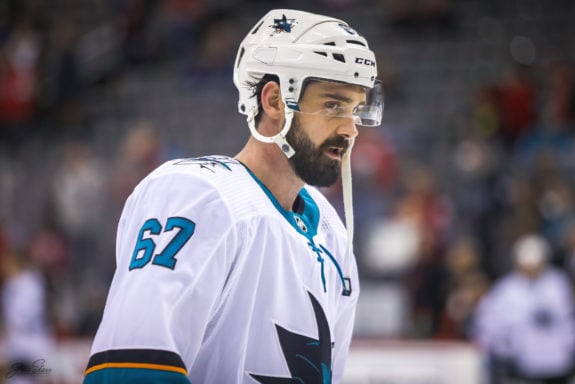
In very limited action this season (10 games), he had a good xG rate. Whether he can sustain that over a larger sample size and gel with either Karlsson or Burns remains to be seen.
What About Free Agents?
Of all the pending UFA’s, only five fit the bill of being left-handed (a requirement to play with the right-handed Burns and Karlsson) and have good xG rates (where both xGA/60 and xGF/60 are positive). They are:
TJ Brodie
Erik Gustafsson
Jon Merrill
Ben Hutton
Slater Koekkoek
I’m not sure the Sharks would even pursue any of these guys, but they should. Especially if they can land them for cheap. Otherwise, the internal options will have to do since they only have about $13 million for the 2020-21 season to spend on 11 players. General manager Doug Wilson is going to have to be creative to make this roster competitive in 2020-21, something he has shown he can do.
The Clock Is Ticking
Both Karlsson and Burns likely have at least a couple of really good seasons left, perhaps more for Karlsson, but it will be how the Sharks utilize them that will have the biggest impact on their success. It will be interesting to see what they choose to do.
The post Sharks Need More Defense for Burns & Karlsson appeared first on The Hockey Writers.
Popular Articles

















































 Blackhawks Chicago
Blackhawks Chicago Panthers Florida
Panthers Florida Penguins Pittsburgh
Penguins Pittsburgh Rangers New York
Rangers New York Avalanche Colorado
Avalanche Colorado Kings Los Angeles
Kings Los Angeles Maple Leafs Toronto
Maple Leafs Toronto Bruins Boston
Bruins Boston Capitals Washington
Capitals Washington Flames Calgary
Flames Calgary Oilers Edmonton
Oilers Edmonton Golden Knights Vegas
Golden Knights Vegas Senators Ottawa
Senators Ottawa Lightning Tampa Bay
Lightning Tampa Bay Flyers Philadelphia
Flyers Philadelphia Islanders New York
Islanders New York Sabres Buffalo
Sabres Buffalo Red Wings Detroit
Red Wings Detroit Devils New Jersey
Devils New Jersey Hurricanes Carolina
Hurricanes Carolina Blue Jackets Columbus
Blue Jackets Columbus Predators Nashville
Predators Nashville Wild Minnesota
Wild Minnesota Blues St. Louis
Blues St. Louis Stars Dallas
Stars Dallas Jets Winnipeg
Jets Winnipeg Mammoth Utah
Mammoth Utah Sharks San Jose
Sharks San Jose Canucks Vancouver
Canucks Vancouver Ducks Anaheim
Ducks Anaheim






